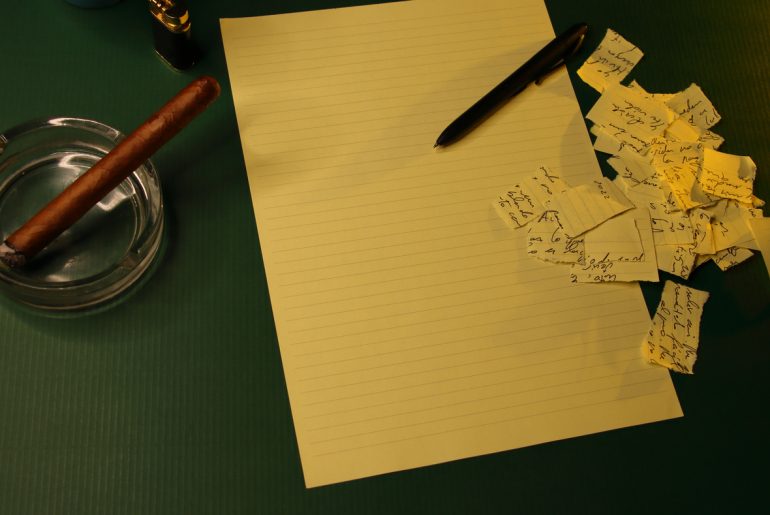Finding moments of relaxation and reflection has become a precious commodity in a world that never stops moving. Despite all the hustle and bustle, lighting a cigar and relaxing provides an oasis of calm. But have you ever considered taking your cigar enjoyment to a higher level by keeping a journal? A cigar journal isn’t merely a record of the cigars you’ve smoked. It’s a tool that empowers you to document and refine your experience. It helps you understand and heightens your appreciation of this timeless indulgence.
We’ll look at the differences between a diary and a journal. After that, we move on to topics like how to get started and essential information to note.
Clarifying Terminology: Diaries vs. Journals
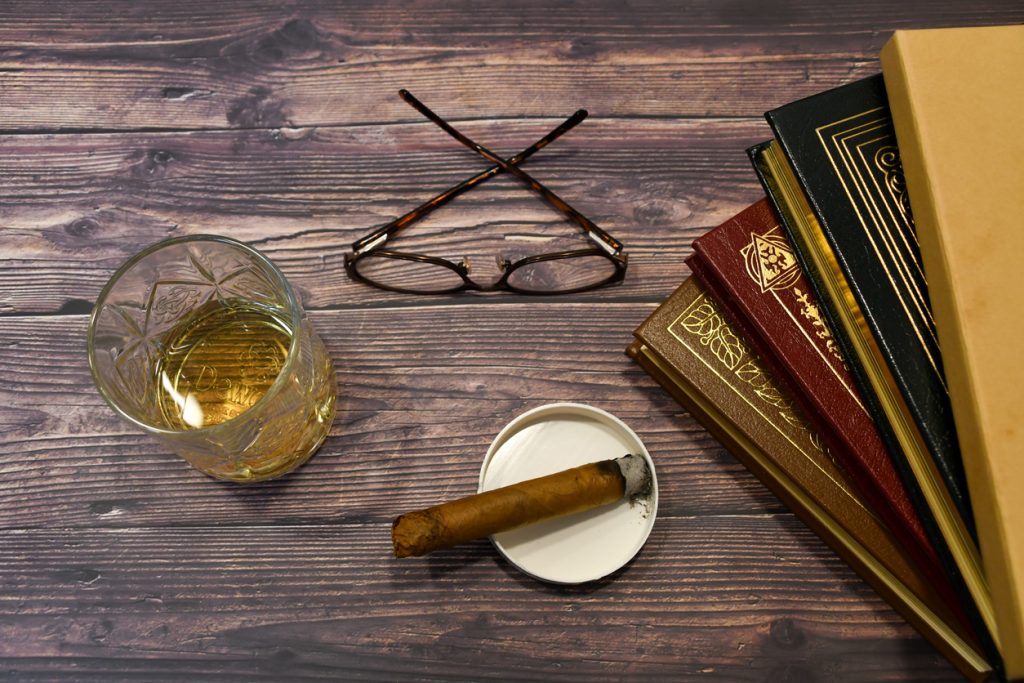
Putting pen to paper has been a centuries-old pastime of humans since we invented writing. In ancient Mesopotamia, they made inscriptions on clay tablets and baked them. The ancient Egyptians wrote many texts on papyrus. The ancient Chinese did the same on their version of paper. Humans have written things down as long as there has been something to register, whether it is spells or religious texts. A complaint about the wrong grade of copper. Or their thoughts (like Marcus Aurelius’ Meditations).
But what is the difference between a diary and a journal? Why should I keep a cigar-tasting journal? Can I do it online? Should it be on paper in a dedicated book? Fear not. We’ll review these below to help you decide best suits your needs.
A diary is a notebook where you record personal feelings, thoughts, and experiences. It can also record what happened during the day or events you’ve experienced. Usually, a diary is chronological according to the date and sometimes even the time when events occurred. For example, we’ve learned a great deal about London’s Great Fire of 1666 that raged through the city from the personal diary of Samuel Pepys.
A journal is more focused on thoughts, feelings, and personal impressions. It is a place where you can write about your hopes and dreams or explore your emotions. Sometimes, you’ll record progress on a project or personal development. Benjamin Franklin, one of the USA’s Founding Fathers, kept detailed journals tracking his progress on many topics.
Getting Started

A cigar journal serves as a dedicated sanctuary where you can record your thoughts, observations, and emotions tied to each cigar you experience. It’s a personal chronicle of your cigar journey. Embarking on the voyage of cigar journaling is as uncomplicated as selecting the perfect notebook that resonates with your sensibilities.
Whether you opt for the timeless allure of a leather-bound tome or the understated charm of a pocket-sized companion, the choice should evoke a sense of eagerness to open its pages and pour your thoughts onto the canvas. Remember, this is not merely a ledger; it’s a tangible extension of your cigar journey.
Documenting the Smoking Experience
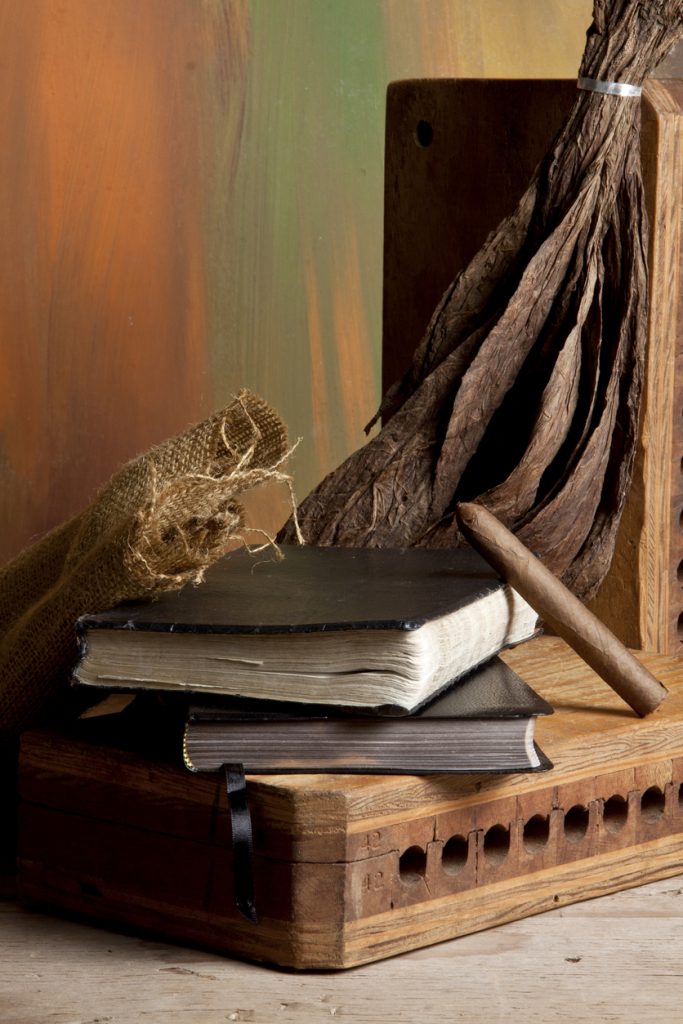
When the time comes to transcribe a cigar encounter onto paper (or into your online space), begin by dedicating a few moments before igniting the cigar to examine it closely. Feel the wrapper’s texture between your fingertips, observe of the cigar’s dimensions and contour, and meticulously inspect the wrapper for any distinguishing characteristics. Pen down these initial observations—they lay the foundation for your forthcoming sensory expedition.
What Should You Record?
To write down or not to write down. That is the question. Artistic license belongs to the Bard. We understand it may seem tedious (and daunting!) to write down everything about your cigar. Still, there’s a method to our madness. It will become a trusty friend to help you navigate the world of cigars. You’ll discover cigars you’ll probably never want to smoke or see again… you’ll find premium cigars you never knew existed. And you’ll discover trusty favorites you’ll return to year after year.
1. Physical Aspects
Before you light up, take some time to gather your thoughts (or clear your mind) and appreciate the cigar’s look, construction, and artwork on the band. Below are some of the details you should jot down.
Cigar Bands
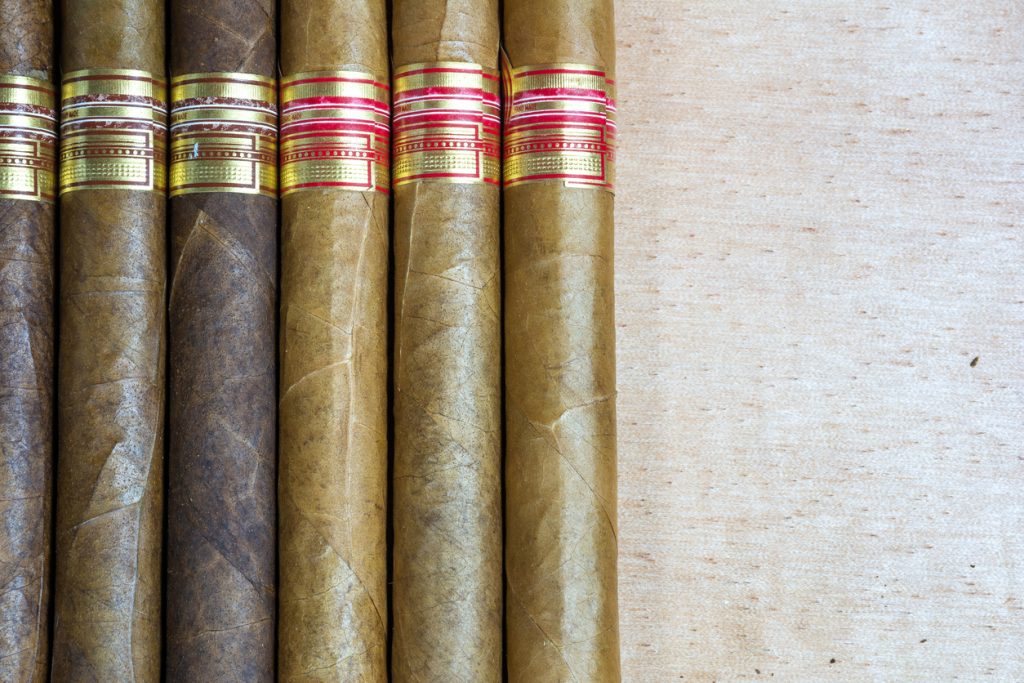
The cigar band is a visual reminder of your cigar. It contains critical details about the cigar, which we will discuss in the points below. The band is also the easiest way to identify and buy more cigars if you like them. Do not be tempted to rip the band off when you hold the cigar in your hands… It can (and most likely will) tear the wrapper before you light it. Wait for the cigar to warm up and loosen the glue before you remove it.
If you have a pre-designed journal, you can stick the band in the dedicated spot. I like to stick my wrapper down with clear tape and a few drops of adhesive on the back. Usually, I pop the band in the top right-hand corner for ease of reference.
Brand Name
The band will tell you the brand name and manufacturer, e.g., Ashton, Davidoff, Pardón, Arturo Fuente. But a brand name is not enough to help you identify a cigar—jot down the series name as well. Some examples include Ashton VSG or Pardón 1964 Anniversary. Some cigar manufacturers have a broad portfolio of stogies, so a series name is important!
Country of Origin
It might seem like a simple decision, but knowing where your cigar was made also helps you to form an informed opinion about the cigar. Sometimes it is on the band; other times not. Countries include, for example, Cuba, Ecuador, Nicaragua, and other countries.
Wrapper
As you know by now, the wrapper is the major contributor to a cigar’s flavor and aroma. Make a note of the color—is it Natural or a Maduro or Oscuro? Some common wrapper varieties include Connecticut Shade, Habano, Ecuadorian Habano, Nicaraguan, etc.
Strength
Moving on, strength is also essential. You should record your impressions of the cigar and how you perceive it. Don’t rely on online reviews alone.
Shape, Length, and Ring Gauge
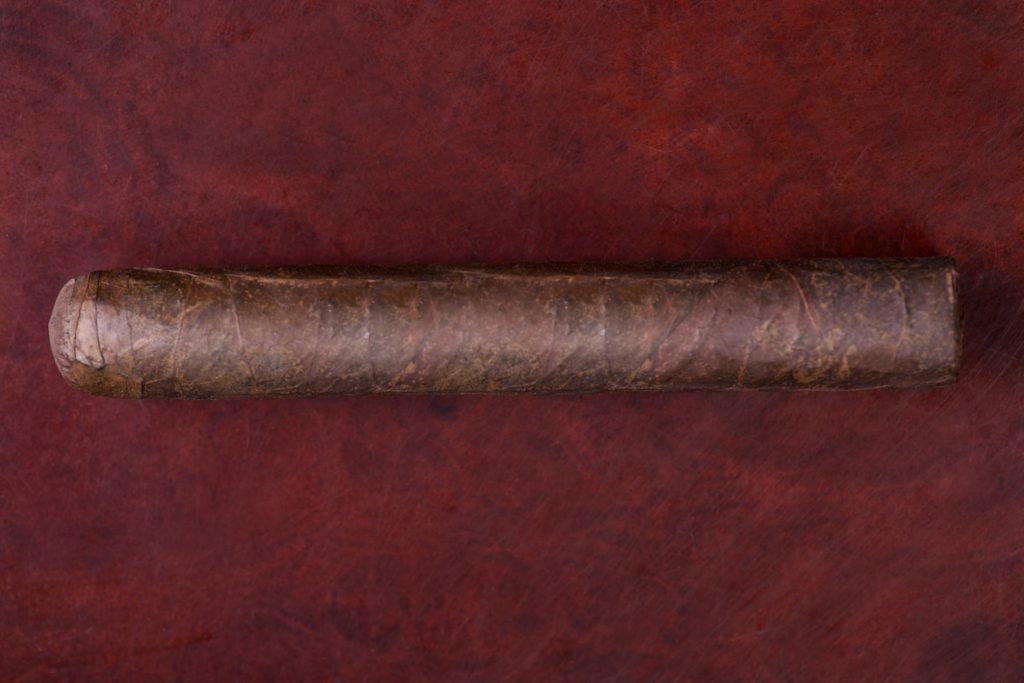
It might seem strange to record the shape, but it can influence the intensity of the cigar and how long it takes to smoke. Different brands often offer a variety of shapes in their portfolio, and you might not like all the shapes they offer. Common shapes include Toro, Corona, Churchill, Torpedo, and Robusto, to name a few.
While you may think a Churchill will be the same length across all brands, manufacturers have their standards, which may vary from one to the next. Measure and make a note of the cigar’s size. Again, the ring gauge might also differ from one brand to the next. Take a moment to jot down a note about this, too.
Usually, premium cigars are hand-rolled and round. Some exceptions exist, like the Pardón 19664 Anniversary, which is box pressed. But don’t be fooled! Sometimes you’ll find round and box-pressed examples within the same blend of cigars.
2. Aromatic Aspects
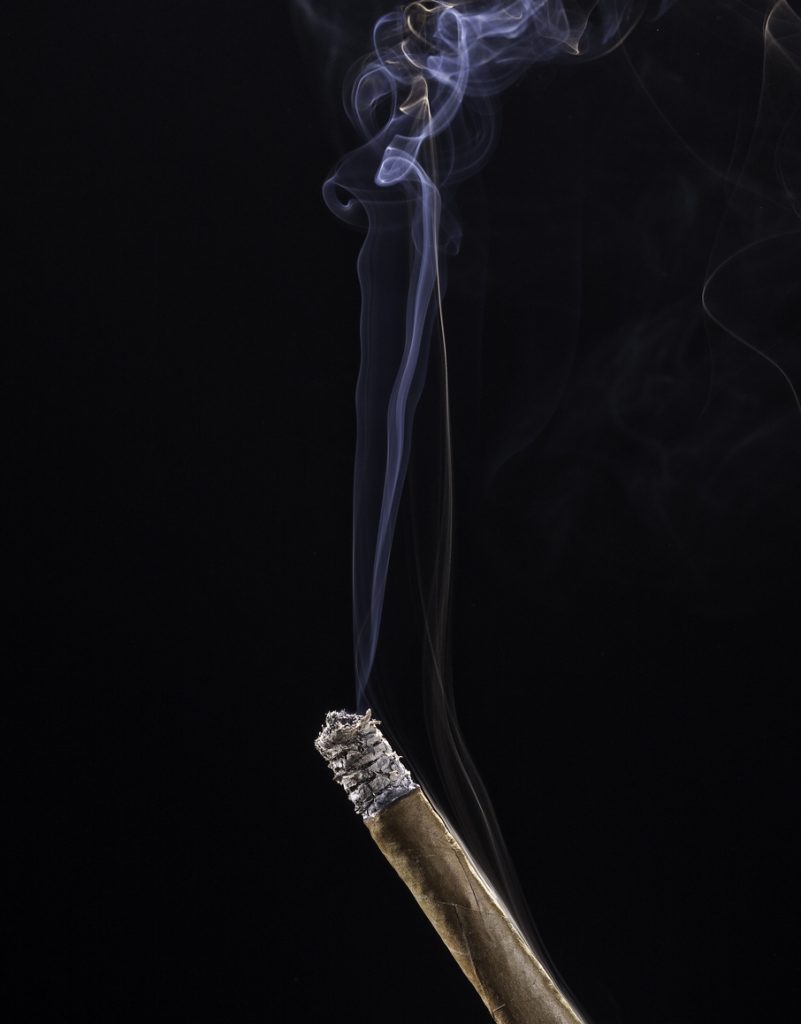
Here you’ll focus on the details of how you experience the cigar’s aroma, taste, draw, etc. These experiences tie in with the notes we mentioned in the previous section.
Aroma When First Lit
What are your first thoughts after smelling the cigar and toasting the foot? Does the aroma you smell match the taste, or do they contrast? First impressions are lasting impressions, they say. Maybe you find the aroma overwhelming or cannot get enough of it. These are essential impressions for your journal.
Tasting Notes
What are your observations? Remember, the initial taste may differ vastly from the first or second third as you smoke your cigar. Or does the flavor stay the same throughout? What tastes are you picking up—it can be anything from coffee to mushrooms to pine needles and even vanilla. Take time to think about what you are tasting and jot down your experience for future reference.
How Is the Draw?
Sometimes a well-made cigar can taste terrible, but the opposite is true about poorly constructed cigars. Take note of these factors because they influence the draw when you puff. Can you puff easily, or are the filler and binder tobaccos too tightly wrapped? Remember, the hallmarks of a well-made cigar is that it burns straight, you can draw easily, and the ash is stable.
What’s the Finish Like?
This is the jewel in every cigar’s crown because it leaves you with your final impressions. Ideally, you’d want more when you’re done. If you experience bitterness in the final puffs or the cigar burns too hot, was it because you held on too long? Is it the cigar’s tendency to produce these tastes after a certain amount of time and smoking? These impressions are vital because they’ll guide your next purchases.
3. General Notes
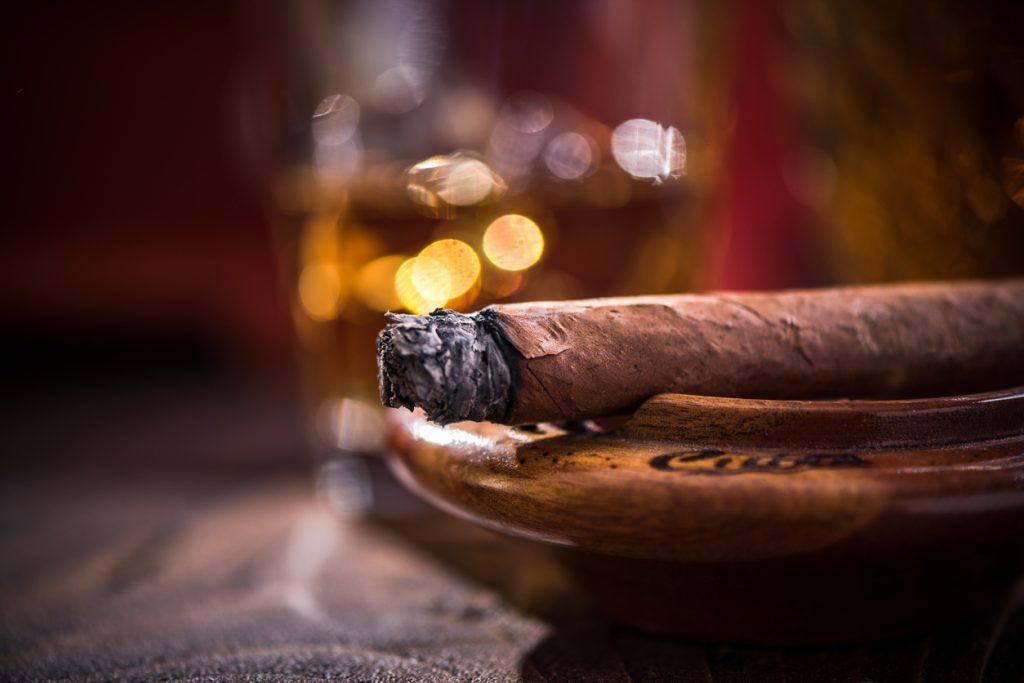
Anything that doesn’t fit into the two categories above you can mention in your general section. Include your thoughts and observations. Here are some ideas to help you in this section of your cigar journal:
- Cigar Blender/Maker: the blender is the person who decides what the final cigar will taste like. A quick online search is usually enough to determine who it is. For example, Carlos Fuente Sr. (1935-2016) is a world-renowned cigar maker. He worked for several brands, including Ashton, Arturo Fuente, and Fuente Opus X, to name a few. Knowing the maker or blender can help you seek out other cigars they made.
- Date and Place Purchased: note when and where you purchased your cigars. This will help you if you want to store and age your cigars like fine wine. It is also helpful when you want to sell part of your collection to prove the age and provenance of the cigars.
- Drink Pairings: what did you enjoy drinking with your cigar? A craft beer? A limited-edition whiskey, or perhaps a special bottle of wine or port? These are important notes to have if you like sharing ideas with other cigar aficionados.
- Who, Where, What, and Why: Who did you smoke with, and what was the occasion? The company can make or break your cigar experience, and maybe you’d like to try the cigar again in a different setting if your experience was not top-notch the first time. Remember, it is a subjective experience with no right or wrong answer.
Conclusion
In a world that often hurries past, smoking a cigar and immortalizing the encounter through the written word is a venerable practice that connects us to life’s more refined aspects. A cigar journal transcends mere documentation. It encapsulates your journey, charts the evolution of your palate, and fosters camaraderie among kindred spirits. It is also a space to observe and write about your favorite cigars. So, the next time you light a cigar, contemplate reaching for your journal and weaving the moment’s essence into its pages. Your future self—and perhaps generations to come—will be indebted to you for preserving the art of savoring within the elegant tapestry of this meticulously crafted chronicle.

